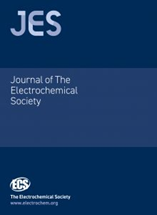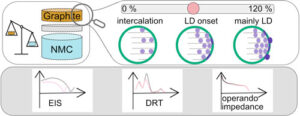 The Journal of The Electrochemical Society (JES) proudly celebrates the rapid success of the open access article “Understanding Lithium Deposition in Lithium-Ion Batteries: The Link between Impedance Results and Electrochemical Behavior.” In just a few short weeks since publication, this paper has risen to the top of JES’s Most Read Articles of 2025, capturing global attention for its clarity, rigor, and real-world relevance.
The Journal of The Electrochemical Society (JES) proudly celebrates the rapid success of the open access article “Understanding Lithium Deposition in Lithium-Ion Batteries: The Link between Impedance Results and Electrochemical Behavior.” In just a few short weeks since publication, this paper has risen to the top of JES’s Most Read Articles of 2025, capturing global attention for its clarity, rigor, and real-world relevance.
Illuminating Lithium Deposition
Lithium deposition, or plating, remains a major challenge in advancing lithium-ion batteries. When metallic lithium forms during fast charging or under non-ideal conditions, it can cause dendrites, capacity loss, and safety risks. This groundbreaking study offers fresh insight by directly linking impedance spectroscopy results to electrochemical deposition behavior, providing researchers with a predictive framework to better understand and control plating phenomena.
By connecting impedance signals with changes in morphology and capacity, the authors reveal when and how lithium deposition occurs. Their work identifies spectral features associated with plating onset, evolving interfacial kinetics, and irreversible capacity fade—insights that will guide the design of safer and more durable energy storage systems.
This integration of diagnostics and electrochemical behavior exemplifies the type of innovation that drives battery research forward.
Celebrating the Authors
ECS and JES extend sincere congratulations and gratitude to the authors for choosing JES as their publication home. Their decision reflects trust in JES as a leading forum for impactful, community-driven science. The article’s rapid ascent—amplified by its open access availability—demonstrates how publishing in JES ensures high visibility, immediate access, and global reach.
By sharing their findings openly, the authors have strengthened the scholarly record and contributed a valuable resource for both academic researchers and industry innovators.
Read the article: Understanding Lithium Deposition in Lithium-Ion Batteries: The Link between Impedance Results and Electrochemical Behavior
Why Publish in JES
The success of this paper highlights why JES remains a top choice for electrochemical researchers worldwide. As the flagship journal of The Electrochemical Society, JES combines a trusted legacy with a commitment to advancing open, accessible science. Authors benefit from rigorous peer review, a global audience, and publication processes designed to ensure their work is read, cited, and built upon.
Whether you’re exploring new battery mechanisms, developing diagnostic tools, or advancing materials science, JES provides a respected platform for sharing discoveries that make a difference.
Join the JES Community
The rapid traction of this article underscores the impact of publishing high-quality, open access research in JES. We invite all researchers to make JES their home for groundbreaking electrochemical science.
Together, we continue to publish excellence, promote accessibility, and power progress—one article at a time.
Read it today

